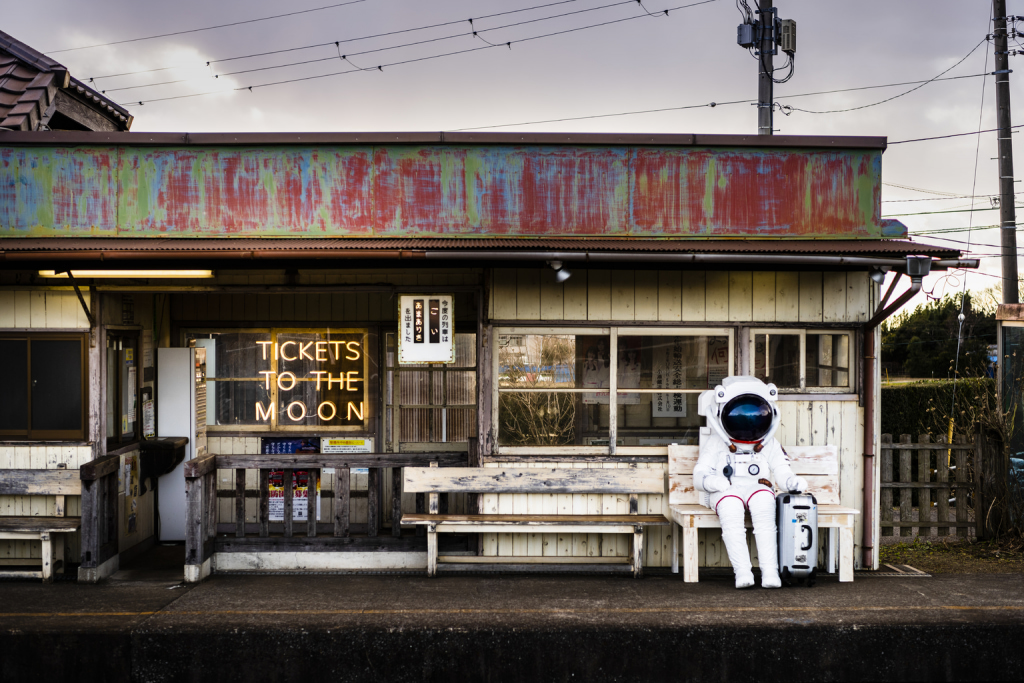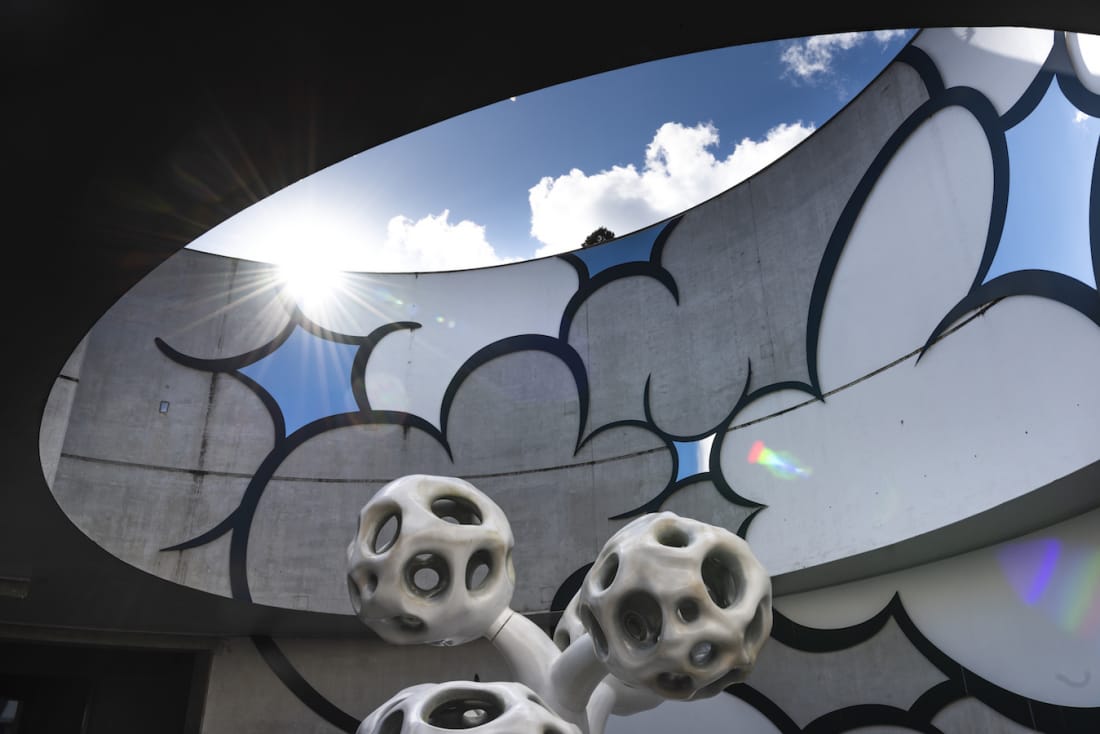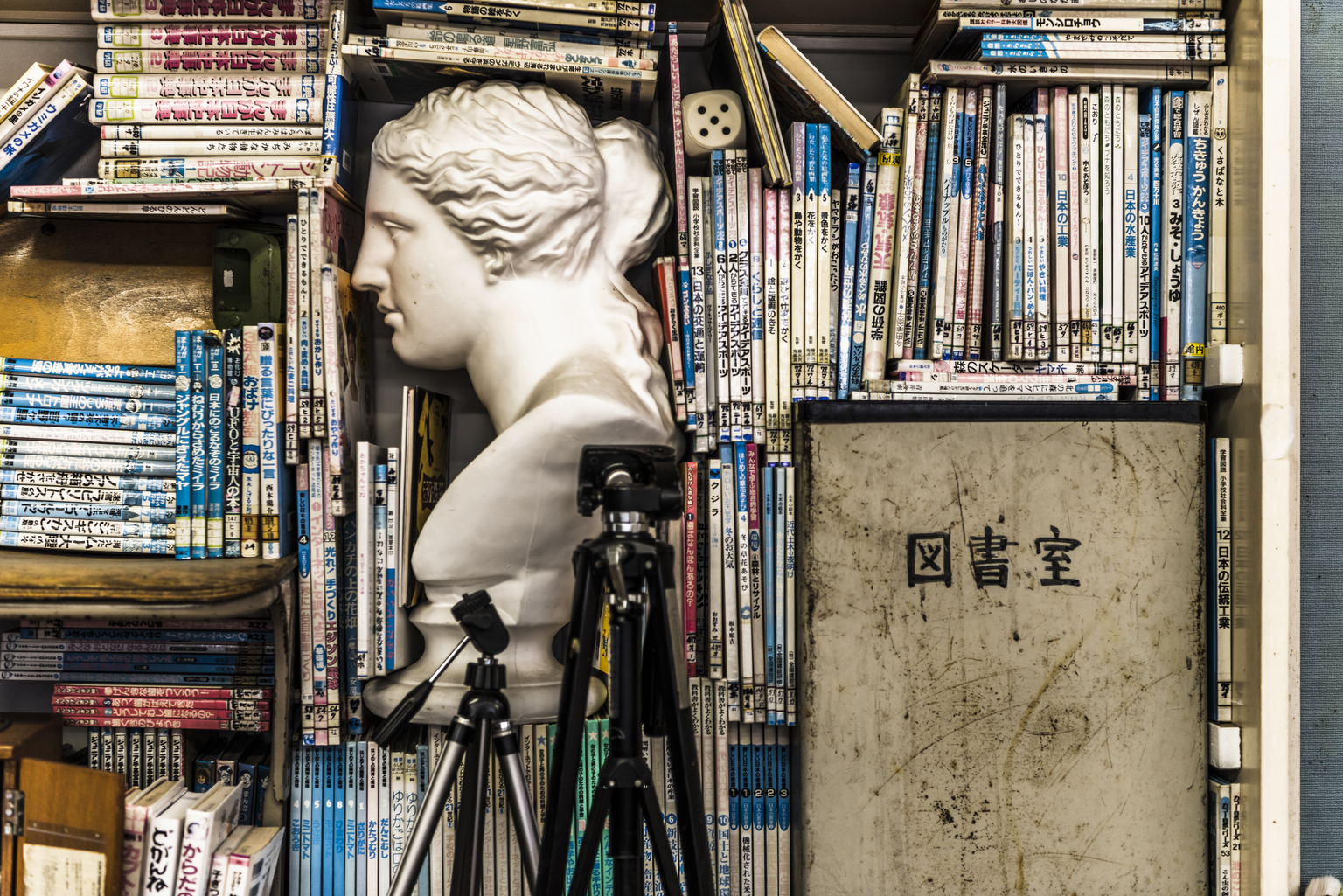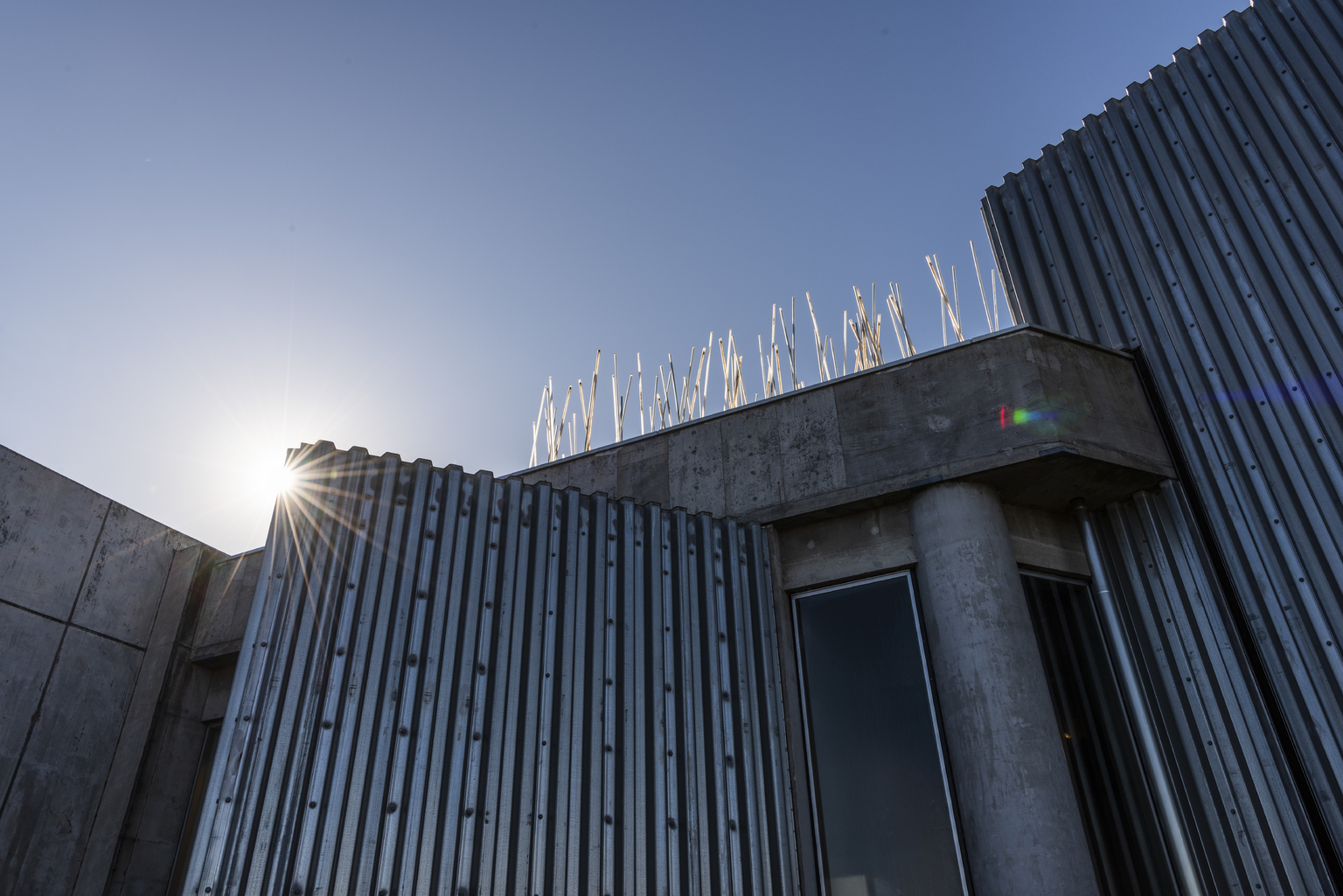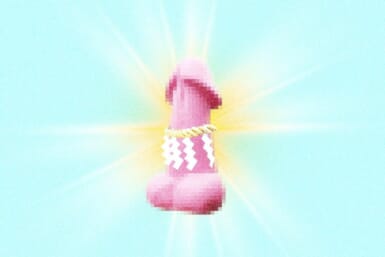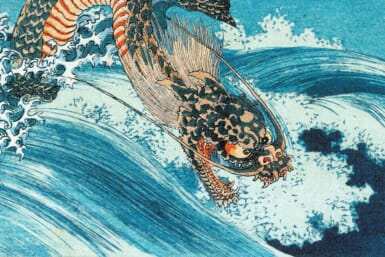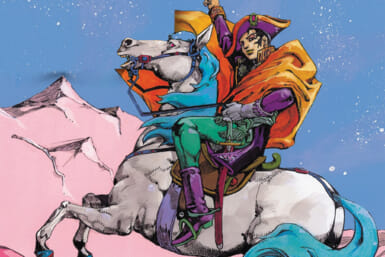There is a phrase in Japanese, satoyama, that describes a mountain ecosystem where the fields and wooded slopes engage within the proximity of human settlements. Satoyama, however, is not only a type of landscape but also the lifestyle wherein. How do people live and work in that liminal space between nature and vigorous humanity? Ichihara city, in Chiba Prefecture, has the answer.
If you live in Tokyo, you may be familiar with the drive. Going to Narita Airport, there is that area at Chiba’s edge where the dense web of factories and Disney architecture gives way to farmland. Ichihara lies here along the Yoro River, a little more than an hour from Tokyo and Yokohama. The city stretches from a terminus of Tokyo Bay well into the Boso Peninsula. A harmony between industry and culture and the endowments of nature suffuses the whole of Ichihara. It appears to be a city not built on the land but into it.
Where Art and Life Blend as One
The Art x Mix Festival is the pinnacle of Ichihara’s spirit of artisanship. The 2020 festival was postponed to this year. The festival is scheduled for March 20 to May 16, 2021, though it may be postponed again depending on the ongoing new coronavirus pandemic. For this event Ichihara acts not as a hollow vessel for a curator’s vision. Rather its topography and history are integral to how we navigate the show.
Viewers take part in an “art trip,” with interactive installations scattered through the entire city. The core of this journey is the Kominato Railway system, which itself is a spectacle. Running the length of Ichihara city from the west coast of the Boso Peninsula to the town of Otaki, the line is home to many quaint, rural stations that are tourist destinations in themselves.
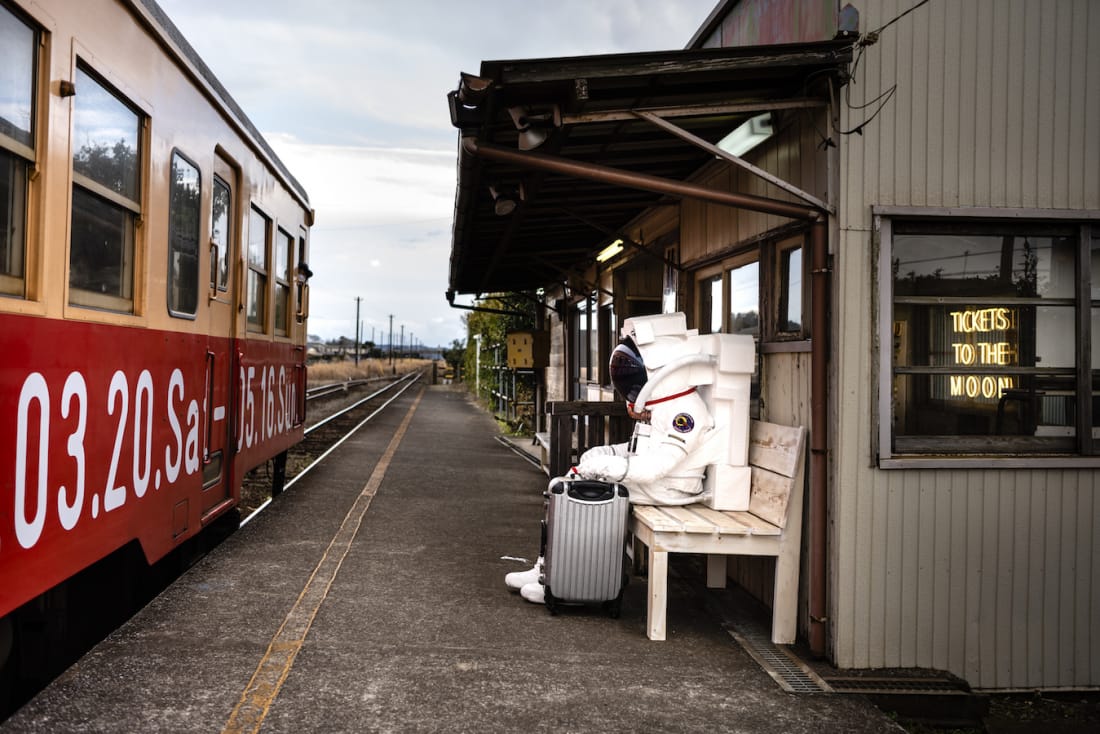
A Ride on the Kominato Railway
The charming, nostalgic Kominato Railway trains are special diesel trains quite different from those sleek silver boxes we see in Tokyo proper. Chugging through the flowered hills of Ichihara, the open-air trolleys (in the warmer months), Ghibliesque box cars, and the modern-made but visually authentic DB4 diesel steam locomotive transform a mere commute into a sightseeing and cultural experience.
Based on the concept of satoyama, the trains are designed to mutually respect the beautiful nature of the rolling hills rolling by, and its passengers.
For Art x Mix, nine locations within or adjacent to the Kominato system become interactive exhibitions, with all artworks carefully curated to coexist with the environment. In other words, they are site-specific, human and inviting. The beginning point of this art journey is Goi Station and the Goi Engine Depot, at the northern boundary of Ichihara city.
You will see at this site Chuang Chih-Wei’s light piece, “Collective memory on railway.” Members of the art club of a local high school were invited to carve phrases or images of their memories onto acrylic boards. These are assembled and illuminated from the inside – each marking is highly personal and also forms part of a dazzling whole.
The City is the Venue
Further south in the journey is Takataki Lake, where the Ichihara Lakeside Museum and the lake itself engage as sights to behold. In addition to the museum’s fantastic permanent collection, you will see a new outdoors piece by acclaimed Russian artist Vladimir Nasedkin on a small plot next to the water. “See the Sky, See Yourself” is a geometrical, maze-like structure. Museumgoers can also enjoy prime views of Takataki Lake and a panorama of Ichihara from the observation tower.
Down the line, the site of the former Heisan Elementary School has been revamped into an exhibition space. At a point, there were only a few students per class at Heisan, and a few years ago it was decided to repurpose the building into a cultural site for the community while preserving every object, and every architectural feature, from the original school. There are still shoe cubbies in the entryway, pictures and drawings on the walls, the signs for the classrooms. As you enter, there is some cognitive dissonance in seeing such culturally fixed environments as a school and an art gallery mix – but the result is beautiful, a bit eerie and always surprising.
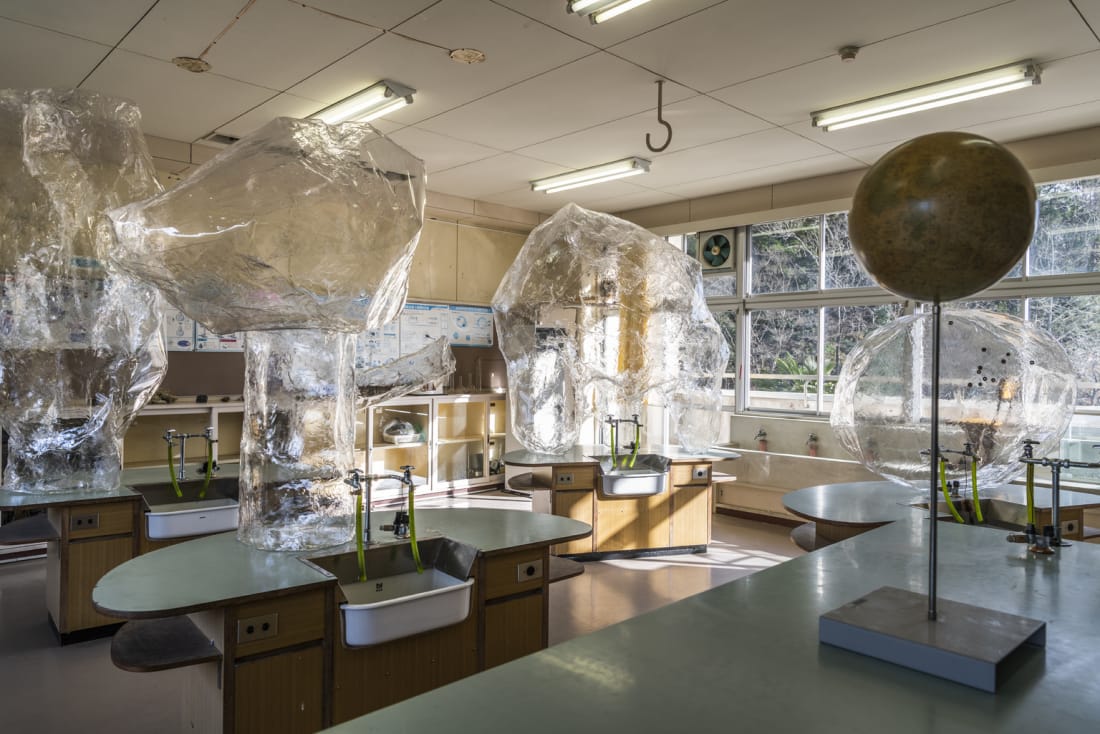
One classroom is rearranged into statuesque composites of textbooks, anatomical figures, paint cans and beakers. The home ec room is covered, floors and sink and all, in patches of mismatched fabric. In “Jacob’s Ladder,” burgeoning contemporary artist Yuma Tomiyasu installed a staticky TV and an old writing desk in an upper stairwell of the building, near a strange and darkened crevice with a ladder to the roof, which was the inspiration for the piece.
There is a similar effort to revitalize old structures near Tsukizaki Station, where one vacant house becomes a venue for immersive works like Ayşe Erkmen’s “Inventory.” Quad Forest, a breathtaking natural park, is also an exhibition site. Nature lovers will revel in the green, the flower fields and impressive geologic formations, and as a complement to the park’s geography are festival sculptures using organic materials.
Art is Life, and Life is Art
Art x Mix does not simply take place in Ichihara. It is a way to explore the environments of the city – a guide map as much as it is an exhibition. The former Heisan Elementary is tucked in quite a remote corner of the city, and to gaze at the blooming cherry trees on its grounds through the windows of a vacant classroom – what is more, through the amorphous, crinkly, glacial forms of Mikala Dwyer’s installation “Wishing wells” – stirs up nostalgia.
Or, as you travel the Kominato Railway, you experience a story that is parallel to your own travels. Across seven train stations, from Goi to Umatate stations, Leonid Tishkov will set up his “Search for the Seven Moons,” a sculpture-light series simulating a space pilgrimage.
At the second stop, Kazusa-Murakami Station, a weary-looking astronaut (sculpture) sits with a suitcase waiting for a “train to the moon.” The station is a relic of Ichihara city’s past, with a hand-painted sign and a faded billboard looming over one of the two platforms. With the arrival of the train, the station rattles. And, as real passengers flit between the platforms, the astronaut sits quietly.
Ichihara city is meant to be appreciated not only by professed art lovers, but also by families, travelers, foodies, lovers of nature and all others. With the curation of Art x Mix being a joint effort between Ichihara community members and industry figures, the festival has reimagined what life in Japan can be – an immersion of land, culture and community.
To find updates about Ichihara Art x Mix 2020+ please visit the official website: ichihara-artmix.jp
Photos by Kayo Yamawaki
Sponsored Post

